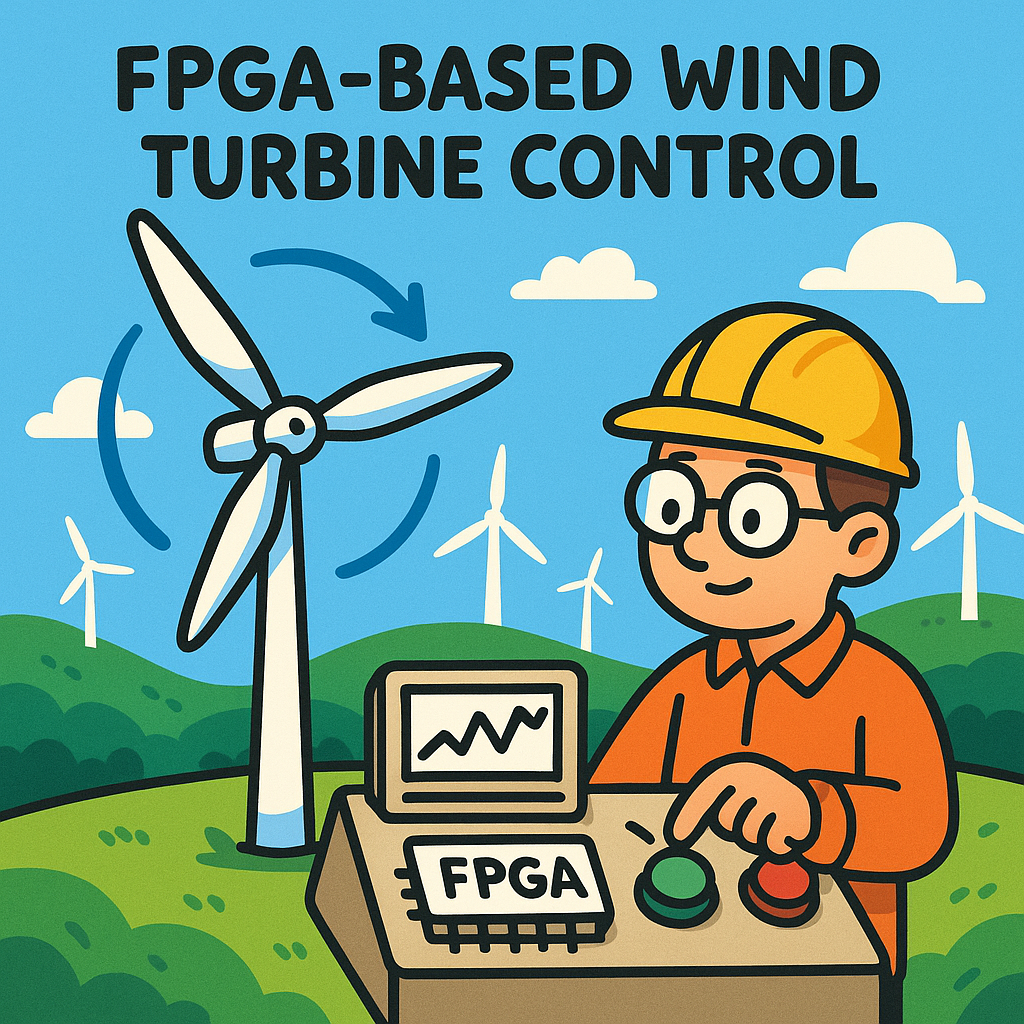Understanding the Need for Real-Time Blade Pitch Control
The quest for optimizing energy capture in wind turbines has led to the development of advanced control algorithms, particularly for the adjustment of blade pitch. The ability to modify the angle of the blades in real-time is critical for maximizing efficiency and ensuring safe operation under varying wind conditions. Traditional control systems often struggle to respond quickly enough to rapidly changing environmental factors, which can lead to either underperformance or mechanical stress. This is where FPGA-based solutions come into play, offering a unique combination of flexibility and speed.
FPGA Architecture: The Heart of Real-Time Control
Field-Programmable Gate Arrays (FPGAs) are ideal for implementing control algorithms due to their parallel processing capabilities and reconfigurability. Unlike microcontrollers or DSPs that might execute tasks sequentially, FPGAs allow for simultaneous processing of multiple signals. This is particularly advantageous for applications like wind turbine blade pitch control, where sensor data from anemometers and accelerometers must be processed in real-time to adjust blade angles dynamically.
Key Components of an FPGA-Based Control System
- Sensors: High-precision sensors are essential for capturing real-time data on wind speed, direction, and turbine performance.
- FPGA Development Board: A robust FPGA board (like Xilinx Zynq or Intel Arria) serves as the platform for implementing control algorithms and interfacing with sensors.
- Control Algorithms: This includes PID controllers, fuzzy logic controllers, or model predictive control strategies tailored for rapid response and adaptability.
Design Tradeoffs: Choosing the Right Algorithms
When developing the control algorithms for blade pitch adjustment, one of the primary considerations is the tradeoff between complexity and performance. Advanced algorithms like model predictive control offer superior performance by forecasting future states, but they require more computational resources. In contrast, simpler PID controllers are easier to implement on FPGAs but may not react optimally under all conditions.
For instance, using a PID controller can lead to a quick response but might struggle with overshoot during rapidly changing wind conditions. The decision to implement a more complex algorithm hinges on the specific operational environment and the computational capacity of the FPGA. A hybrid approach could be beneficial, leveraging a PID controller for normal operations while switching to a more complex model during extreme conditions.
Challenges in Implementation
One of the most significant challenges in FPGA-based systems is the need for low-latency processing. The data from sensors must be collected, processed, and acted upon within milliseconds to ensure that the turbine blades are optimally positioned. Any delay can result in suboptimal energy capture or, worse, mechanical failure.
Another challenge is the integration of the FPGA with existing turbine control systems. Many turbines are equipped with legacy control systems that may not support direct interfacing with FPGAs. This often necessitates the development of custom interfaces or the use of intermediary protocols, adding complexity to the overall system architecture.
Solutions and Best Practices
- Data Fusion: Implementing data fusion techniques can enhance sensor data reliability, allowing for more accurate pitch adjustments.
- Simulation and Testing: Before deployment, simulating the control algorithms in a virtual environment can identify potential issues and optimize performance.
- Modular Design: Creating a modular architecture allows for easier updates and improvements without overhauling the entire system.
Real-World Applications and Future Directions
In real-world applications, several wind farm operators have begun transitioning to FPGA-based control systems, experiencing significant improvements in energy capture rates. The flexibility of FPGAs allows operators to tweak and refine algorithms even after deployment, adapting to new insights gained from operational data.
Looking ahead, the integration of machine learning techniques into FPGA-based control systems presents an exciting frontier. By analyzing historical performance data, algorithms could become even more adaptive, predicting optimal blade angles based on learned patterns from past wind conditions. However, this would require careful consideration of computational limits and real-time processing capabilities.
This journey into FPGA-based control for wind turbine blade pitch adjustment is not just about technology; it’s about harnessing the power of wind more effectively while ensuring the longevity and reliability of turbine operations. As engineers continue to push the boundaries, the potential for smarter, more efficient energy production grows exponentially.



